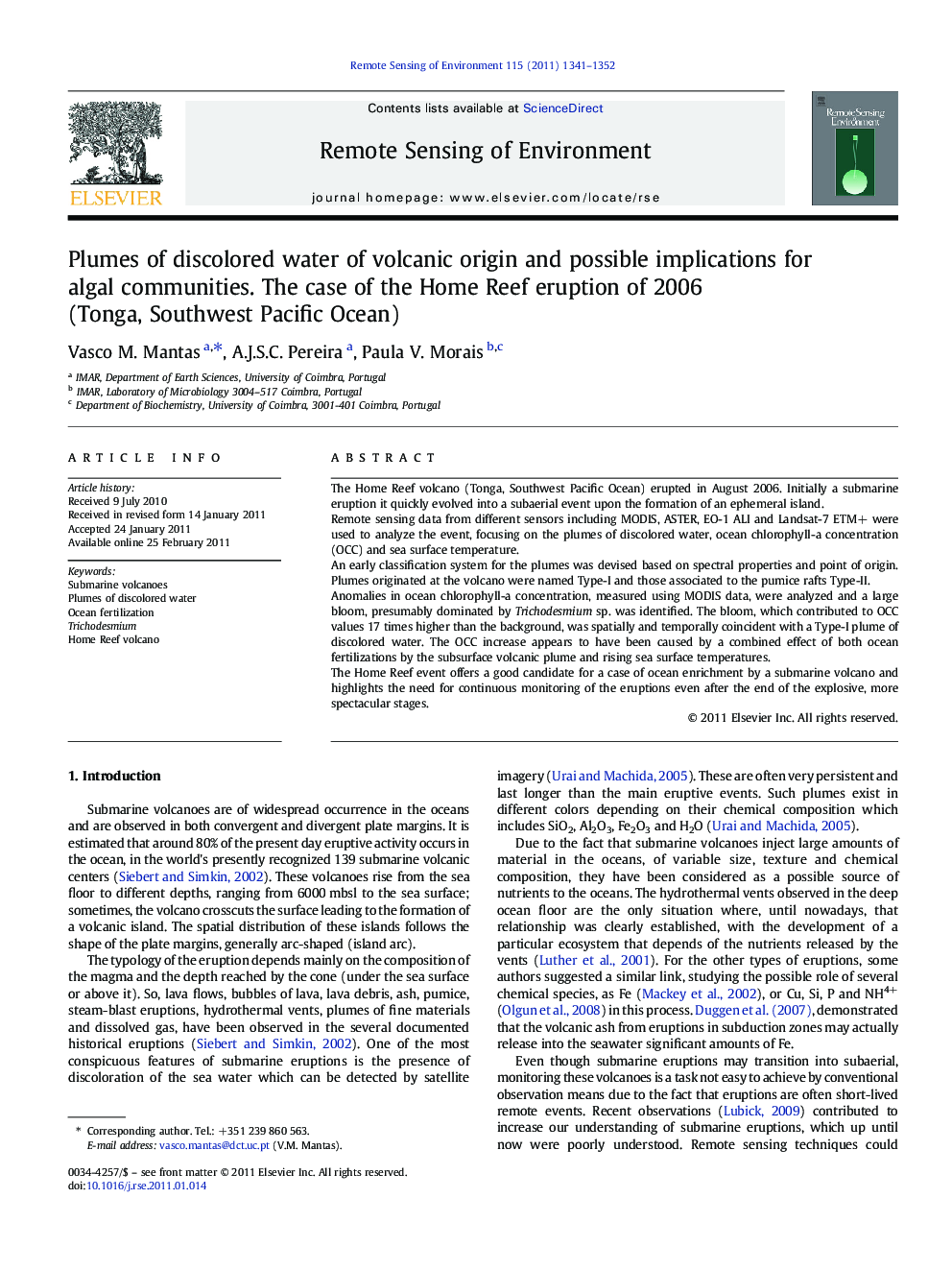| Article ID | Journal | Published Year | Pages | File Type |
|---|---|---|---|---|
| 4459373 | Remote Sensing of Environment | 2011 | 12 Pages |
The Home Reef volcano (Tonga, Southwest Pacific Ocean) erupted in August 2006. Initially a submarine eruption it quickly evolved into a subaerial event upon the formation of an ephemeral island.Remote sensing data from different sensors including MODIS, ASTER, EO-1 ALI and Landsat-7 ETM+ were used to analyze the event, focusing on the plumes of discolored water, ocean chlorophyll-a concentration (OCC) and sea surface temperature.An early classification system for the plumes was devised based on spectral properties and point of origin. Plumes originated at the volcano were named Type-I and those associated to the pumice rafts Type-II.Anomalies in ocean chlorophyll-a concentration, measured using MODIS data, were analyzed and a large bloom, presumably dominated by Trichodesmium sp. was identified. The bloom, which contributed to OCC values 17 times higher than the background, was spatially and temporally coincident with a Type-I plume of discolored water. The OCC increase appears to have been caused by a combined effect of both ocean fertilizations by the subsurface volcanic plume and rising sea surface temperatures.The Home Reef event offers a good candidate for a case of ocean enrichment by a submarine volcano and highlights the need for continuous monitoring of the eruptions even after the end of the explosive, more spectacular stages.
Research Highlights► Plumes of discolored water of volcanic origin can be spectrally differentiated. ► Possible Trichodesmium sp. bloom detected in likely association with plumes of discolored water. ► Under a proper setting, enrichment by the plumes may cause phytoplankton growth. ► Home Reef is a good candidate for a case of ocean enrichment by submarine volcanoes.
